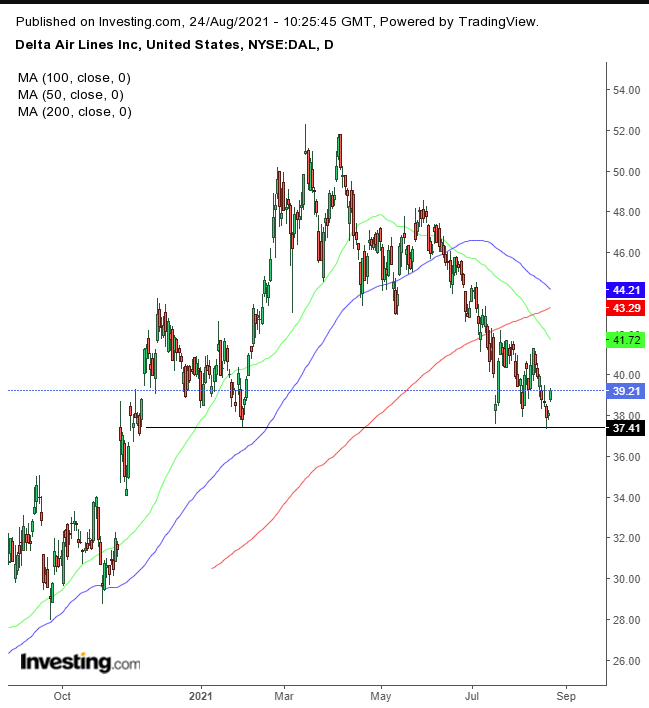Since its early-April record peak, when shares of Delta Air Lines (NYSE:) hit a high of over $51, the stock has lost almost a quarter of its value. The Atlanta-based carrier’s stock dropped along with demand for its flights as the fourth COVID wave began escalating.
Notwithstanding, the airline’s mid-July earnings release showed a strong , leading some to expect rising demand regardless of the fourth wave. We’re skeptical.
There’s no apparent link between a strong second quarter, which took place before the virus reignited, and the reduced level of ticket sales the airline is seeing now. Plus, there isn’t any indication on when the fourth wave will end. All of which isn’t bullish for Delta shares.

DAL Daily
DAL has been moving sideways since mid-July, possibly raising the hopes of some for a bottom. However, as the 50 DMA plunged below that of the 200 DMA it created a Death Cross, underscoring recent price weakness. The bearish pattern also suggests a continued downward path.
If the price falls below $27, it will complete a massive H&S top, in place since November.
Trading Strategies
Conservative traders should wait for the price to provide a decisive downside breakout, completing the H&S top, employing both time and price filters to avoid a bear trap. Then, they’d wait for the price to rebound in a return move, to retest the neckline, which will push the price back down, before considering the risk of a short position.
Moderate traders would also wait for the pattern’s completion, with a downside penetration, while also employing filters, so as not to be whipsawed. Like their conservative peers, they too might wait for a corrective rally, for a better entry, if not for further confirmation.
Aggressive traders could short upon a close below $37, with the understanding that the price could be wild at that point. They should trade using a plan that accommodates that risk, with a proportionately justifying reward. Here’s an example:
Trade Sample
- Entry: $37
- Stop-Loss: $38
- Risk: $1
- Target: $32
- Reward: $5
- Risk:Reward Ratio: 1:5

